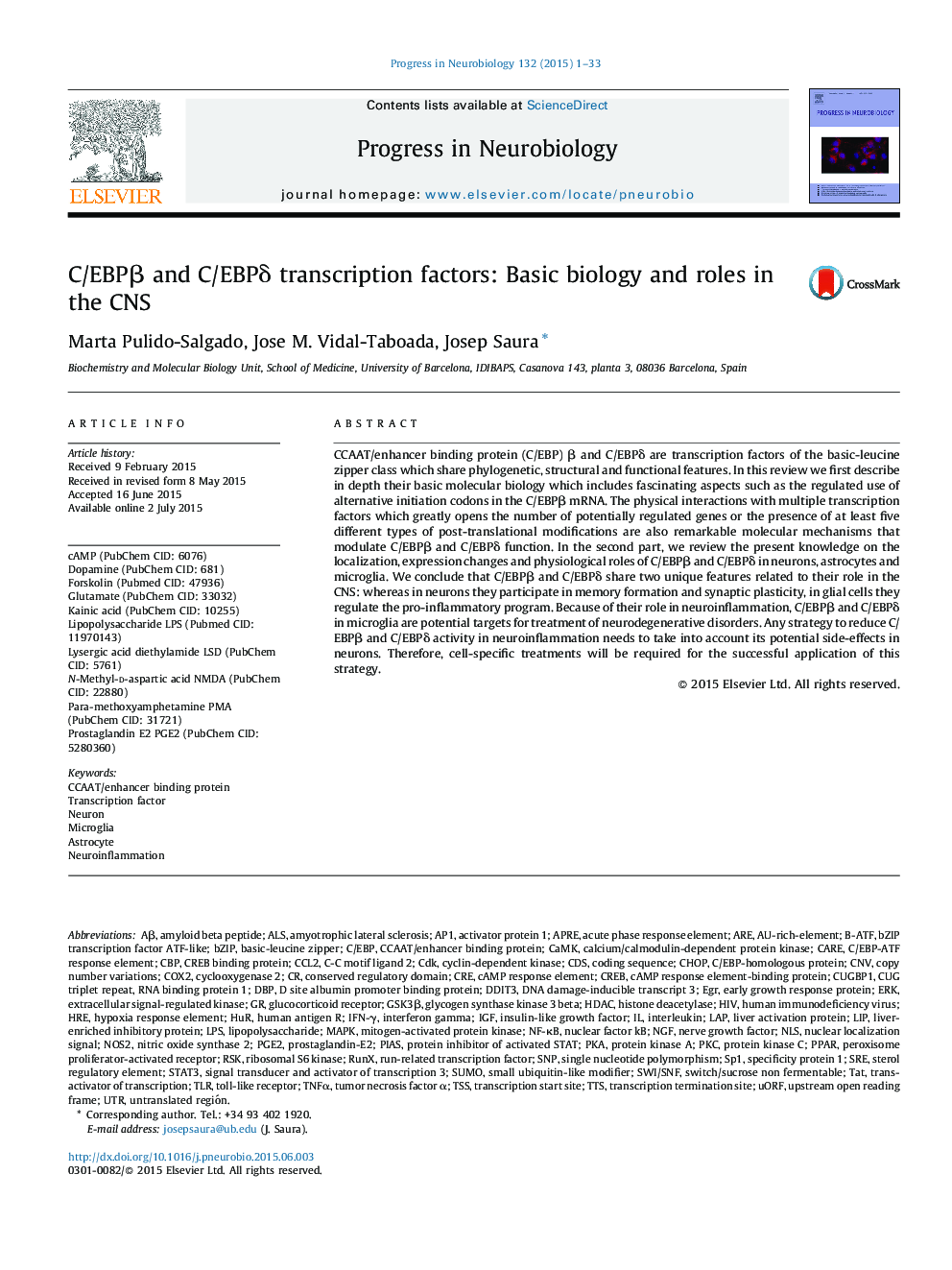| Article ID | Journal | Published Year | Pages | File Type |
|---|---|---|---|---|
| 4353243 | Progress in Neurobiology | 2015 | 33 Pages |
•C/EBPβ and C/EBPδ are phylogenetically and structurally-related transcription factors.•C/EBPβ and C/EBPδ show fine transcriptional, translational and post-translational regulation.•In neurons C/EBPβ and C/EBPδ participate in memory formation and synaptic plasticity.•In microglial cells C/EBPβ and C/EBPδ promote pro-inflammatory gene expression.
CCAAT/enhancer binding protein (C/EBP) β and C/EBPδ are transcription factors of the basic-leucine zipper class which share phylogenetic, structural and functional features. In this review we first describe in depth their basic molecular biology which includes fascinating aspects such as the regulated use of alternative initiation codons in the C/EBPβ mRNA. The physical interactions with multiple transcription factors which greatly opens the number of potentially regulated genes or the presence of at least five different types of post-translational modifications are also remarkable molecular mechanisms that modulate C/EBPβ and C/EBPδ function. In the second part, we review the present knowledge on the localization, expression changes and physiological roles of C/EBPβ and C/EBPδ in neurons, astrocytes and microglia. We conclude that C/EBPβ and C/EBPδ share two unique features related to their role in the CNS: whereas in neurons they participate in memory formation and synaptic plasticity, in glial cells they regulate the pro-inflammatory program. Because of their role in neuroinflammation, C/EBPβ and C/EBPδ in microglia are potential targets for treatment of neurodegenerative disorders. Any strategy to reduce C/EBPβ and C/EBPδ activity in neuroinflammation needs to take into account its potential side-effects in neurons. Therefore, cell-specific treatments will be required for the successful application of this strategy.
